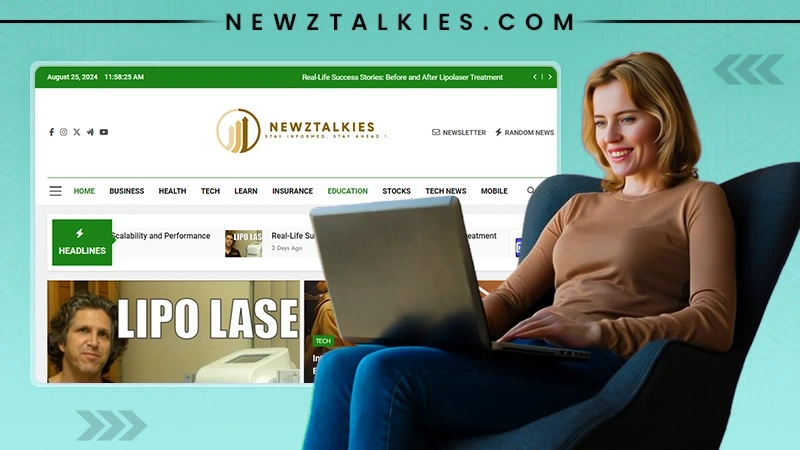Introduction
Prognocis is an electronic health record (EHR) system developed to streamline the management of patient records and improve the efficiency of healthcare providers. In this comprehensive guide, we’ll delve deep into what Prognocis is, how it works, and why it’s become a game-changer in the world of healthcare IT. Whether you’re a healthcare professional or just curious about modern EHR systems, this article will provide you with all the insights you need.

1. What is Prognocis? An Overview of the System
1.1 Defining Prognocis and its Role in Healthcare
Prognocis is a cloud-based electronic health record (EHR) platform designed for healthcare practices of various sizes and specialties. At its core, Prognocis aims to make the task of managing patient records easier by automating tasks like scheduling, billing, and data entry. It allows healthcare providers to maintain detailed patient histories, ensuring that critical information is accessible at all times.
Unlike traditional paper records or outdated software systems, Prognocis provides an intuitive interface that integrates all aspects of patient care into one cohesive platform. The system is designed to be user-friendly, with customizable templates and features that help clinicians save time while improving the quality of care they deliver. By automating administrative tasks, allows doctors, nurses, and other medical professionals to focus more on their patients and less on paperwork.
1.2 How Prognocis Differs from Traditional EHR Systems
Many EHR systems on the market today are clunky and difficult to navigate, which can be a major frustration for busy healthcare providers. addresses this issue by offering a streamlined interface that is both easy to use and highly customizable. One of the standout features of is its ability to adapt to the unique workflows of different medical practices. For example, a dermatology clinic may have different needs than a pediatrician’s office, and can be tailored accordingly.
Another key distinction is its cloud-based nature. Being hosted in the cloud means that can be accessed from anywhere with an internet connection, making it a flexible option for healthcare providers who may need to access patient records remotely. This feature is particularly beneficial in today’s world, where telemedicine is becoming more and more prevalent.
1.3 The Evolution of EHR Systems and Where Prognocis Fits
EHR systems have come a long way since their inception. Initially, these systems were designed simply to digitize paper records. However, as technology has advanced, so have the capabilities of EHR platforms. Prognocis represents the next step in this evolution by integrating artificial intelligence, machine learning, and big data analytics into its functionality. This not only helps healthcare providers make more informed decisions but also improves the overall patient experience.
fits into a broader trend of EHR systems becoming more patient-centric. By making it easier for patients to access their medical records, schedule appointments, and communicate with their providers, is helping to bridge the gap between healthcare providers and the people they serve.
2. The Key Features of Prognocis: Why It’s a Leading EHR System
2.1 Customization and Flexibility for Different Specialties
One of the most significant advantages of Prognocis is its ability to cater to various medical specialties. Whether you’re running a family practice, a specialized clinic, or a multi-location healthcare facility, Prognocis has tools designed specifically for you. The system allows medical professionals to customize their workflows, templates, and reports according to their specialty’s needs.
For example, an orthopedic practice might need specific templates for recording physical exams and tracking surgical outcomes, while a mental health professional may require a different set of tools to manage therapy notes and patient progress reports. Prognocis recognizes that healthcare is not one-size-fits-all and provides the necessary flexibility for each practice to tailor the system to its requirements.
The ability to customize extends to patient forms, billing procedures, and even appointment types, making it incredibly versatile. This level of customization sets Prognocis apart from other EHR systems, which often force users to adapt to a rigid structure.
2.2 Cloud-Based Accessibility and Security
Being a cloud-based system, Prognocis offers unmatched convenience and flexibility when it comes to accessing patient information. Gone are the days when healthcare providers had to be physically present at the clinic to review records or input new data. With Prognocis, providers can log in from anywhere, at any time, using any internet-connected device, including smartphones and tablets.
The platform also takes security seriously, as healthcare data is sensitive and protected by laws such as HIPAA (Health Insurance Portability and Accountability Act). Prognocis utilizes advanced encryption techniques to ensure that patient information is secure, even in the cloud. In addition, the system has multi-factor authentication (MFA) and role-based access controls to ensure that only authorized personnel can view or modify sensitive data.
Prognocis also has data backup and disaster recovery systems in place to prevent data loss in the event of a hardware failure or cyberattack. This combination of flexibility and security makes Prognocis a leading choice for healthcare providers who want the convenience of cloud access without compromising on data protection.
2.3 Telemedicine Integration and Patient Engagement
In recent years, the demand for telemedicine services has skyrocketed, and Prognocis has quickly adapted to meet this need. The platform offers seamless integration with telemedicine tools, allowing healthcare providers to offer virtual visits to patients. This is particularly valuable for patients who live in remote areas or have difficulty traveling to the clinic.
Telemedicine features are built directly into the system, making it easy for providers to schedule and conduct virtual appointments without needing third-party software. Prognocis ensures that all telemedicine interactions are secure, HIPAA-compliant, and integrated into the patient’s medical record, ensuring a seamless experience for both the provider and the patient.
In addition to telemedicine, Prognocis has a strong focus on patient engagement. Through the patient portal, individuals can schedule appointments, view their medical history, request prescription refills, and even message their healthcare providers directly. This level of engagement helps to empower patients, giving them more control over their healthcare and fostering a stronger provider-patient relationship.
3. The Benefits of Implementing Prognocis in Your Healthcare Practice
3.1 Improved Workflow and Time Management
One of the most significant challenges in healthcare today is managing the sheer volume of administrative tasks that come with running a practice. From scheduling appointments to processing insurance claims, healthcare providers are often bogged down by paperwork. Prognocis helps alleviate this burden by automating many of these tasks, freeing up time for healthcare professionals to focus on what truly matters: patient care.
For example, the system’s automated scheduling tool helps to reduce no-shows and allows practices to manage appointment times more effectively. With the ability to set reminders for both patients and staff, Prognocis ensures that everyone stays on the same page, which can greatly reduce the amount of time spent on administrative follow-up.
Additionally, the integrated billing and coding features help practices manage their revenue cycle more efficiently. Prognocis automatically checks for coding errors and helps ensure that claims are submitted correctly the first time, reducing the need for resubmissions and improving overall cash flow.
3.2 Enhanced Patient Care and Clinical Decision Support
Prognocis isn’t just about making life easier for healthcare providers; it also improves the quality of care that patients receive. By centralizing all patient information in one place, Prognocis allows providers to get a comprehensive view of a patient’s medical history at a glance. This means that important details are less likely to be overlooked, leading to better clinical outcomes.
In addition, Prognocis includes clinical decision support tools that help providers make more informed choices about patient care. For example, the system can provide alerts about potential drug interactions, suggest treatment protocols based on the latest guidelines, and even flag abnormal test results for further review. This kind of support can be invaluable in ensuring that patients receive the most effective treatment possible.
3.3 Scalability and Cost Savings for Growing Practices
As a practice grows, its needs will inevitably evolve, and Prognocis is designed to scale accordingly. Whether you’re opening a new location or adding more providers to your team, Prognocis can adapt to meet the demands of a larger operation. The system’s cloud-based nature makes it easy to add new users or features without needing to invest in expensive hardware upgrades or undergo lengthy installation processes.
In terms of cost, Prognocis can save practices money in several ways. By automating tasks like billing and coding, the system reduces the need for additional administrative staff. The improved accuracy in claims processing can also lead to faster reimbursements from insurance companies, improving a practice’s financial health. Finally, the ability to offer telemedicine services can attract new patients and generate additional revenue streams, further contributing to the overall financial well-being of the practice.
4. Challenges and Considerations When Implementing Prognocis
4.1 Initial Learning Curve and Staff Training
While Prognocis is designed to be user-friendly, like any new system, it can take some time for staff to get up to speed. The initial learning curve can be a challenge, particularly for practices that are transitioning from paper records or outdated software systems. Staff members may need to undergo training to fully understand how to use the system’s features, and there may be a period of adjustment as everyone gets used to the new workflows.
Prognocis offers comprehensive training and support services to help practices make a smooth transition. This includes webinars, online.














Leave a Reply